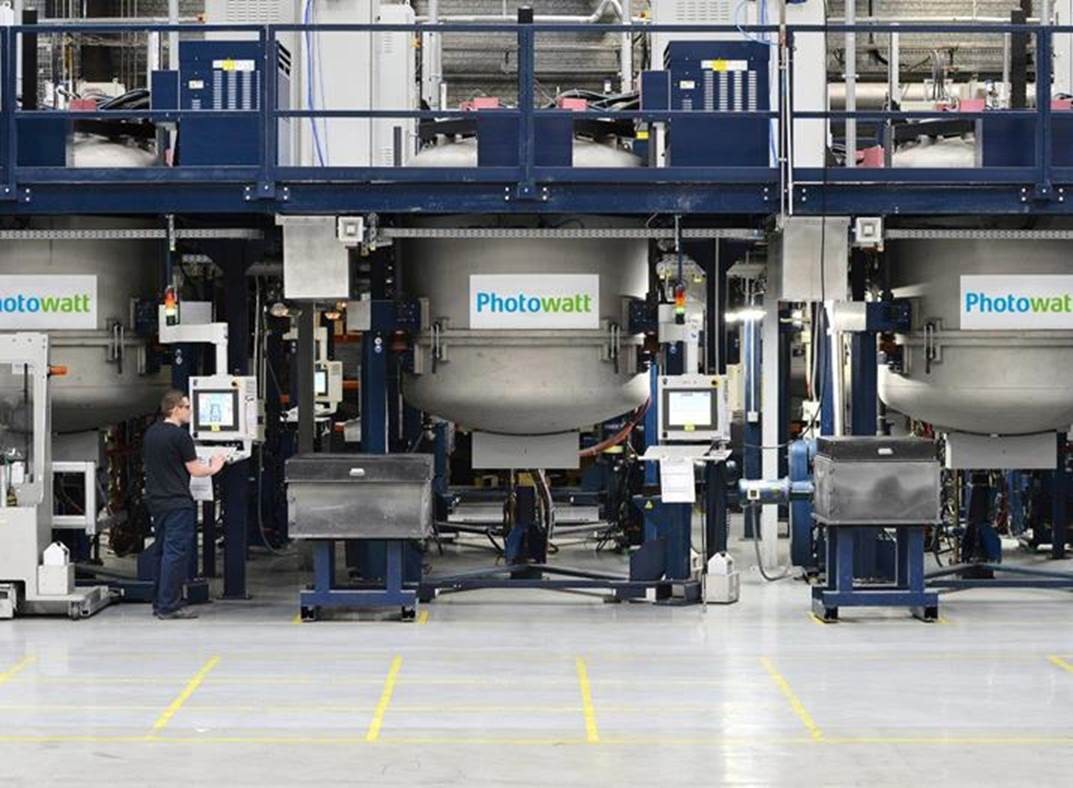French vertically integrated solar module maker, Photowatt, a unit of EDF EN, announced it will increase its ingot and wafer production capacity from 50 MW to 500 MW.
Furthermore, the company has revealed it will expand its ingot and wafer business through a newly created company, which has developed a technology for the crystallization of silicon created by French solar energy research institute, INES.
The new company, Photowatt Crystal Advanced, will be 60% owned by Photowatt, 30% owned by Chinese-Canadian solar manufacturer, Canadian Solar, and 10% owned by ECM Greentech. As for its solar module capacity, which is currently of around 100 MW, the company has not made any new announcements.
All of the new and existing production will be located at the company’s factory in Bourgoin-Jailleu, in France’s province of Auvergne-Rhône-Alpes, and all of its 313 employees will be involved in a large requalification program.
“EDF is putting its words in action. After the announcement of its strong involvement of in the French solar endeavor, it makes a lot of sense to invest in the up-stream”, Xavier Daval, vice president of the French renewable energy association, SER (and president of its solar commission, SOLER) told pv magazine.
All of the modules produced at the facility will be distributed in the French market for projects tendered by the government.
Plan solaire
Increasing Photowatt’s production capacity, on the other hand, seems to be a natural consequence of the 30 GW plan announced by EDF in mid-December.
According to this plan, the French utility, which is still owned by 85% by the French government, will deploy this capacity exclusively in France, and it will add to projects currently under development in foreign markets.
Responding to questions from pv magazine, EDF spokesperson, Clarisse Placidoux, said the solar plan is aligned with the government’s goal of rebalancing France’s energy mix through the expansion of renewable capacity across the country.
Overall, EDF expects to invest €25 billion to implement the “plan solaire,” said Placidoux, while the energy company will also work with industrial and financial partners.
“EDF’s Solar Power Plan is … expected to create tens of thousands of jobs in France during the construction period,” continued Placidoux, adding, “It is a concrete illustration of the goals outlined in the Group’s CAP 2030 strategy, which was initiated in 2015 and aim to double the Group’s installed renewable energy capacity by 2030.”
She went on to say that in order to implement the plan, EDF Group will leverage all its resources, “in order to sustain a vigorous rate of expansion.”
These include identification and use of land from its portfolio of land assets: locations close to nuclear power plants, reconversion of industrial wasteland or dismantled sites, development of floating solar plants on hydroelectric sites; and use of internal resources.
“Along with the above, EDF will also be working together with the public authorities to identify suitable parcels of land for the construction of new solar facilities,” said Placidoux.
She concluded, “Today, EDF Energies Nouvelles has realized around 10% of France’s solar installed capacity.”
This content is protected by copyright and may not be reused. If you want to cooperate with us and would like to reuse some of our content, please contact: editors@pv-magazine.com.




By submitting this form you agree to pv magazine using your data for the purposes of publishing your comment.
Your personal data will only be disclosed or otherwise transmitted to third parties for the purposes of spam filtering or if this is necessary for technical maintenance of the website. Any other transfer to third parties will not take place unless this is justified on the basis of applicable data protection regulations or if pv magazine is legally obliged to do so.
You may revoke this consent at any time with effect for the future, in which case your personal data will be deleted immediately. Otherwise, your data will be deleted if pv magazine has processed your request or the purpose of data storage is fulfilled.
Further information on data privacy can be found in our Data Protection Policy.